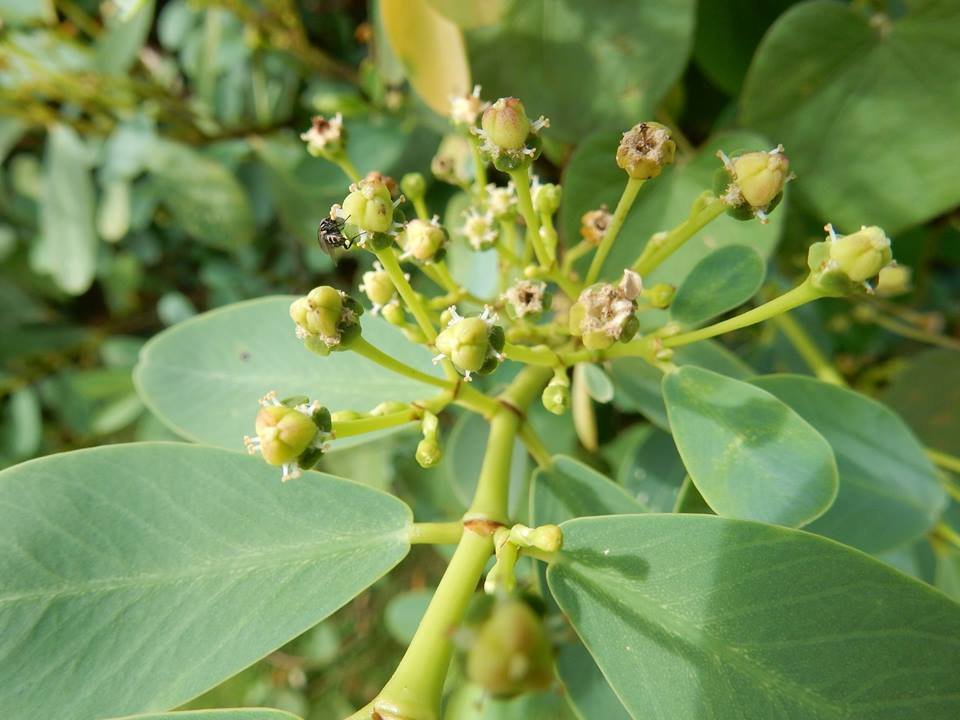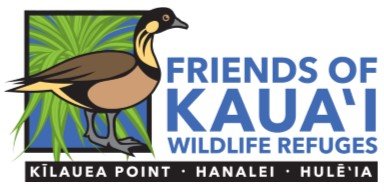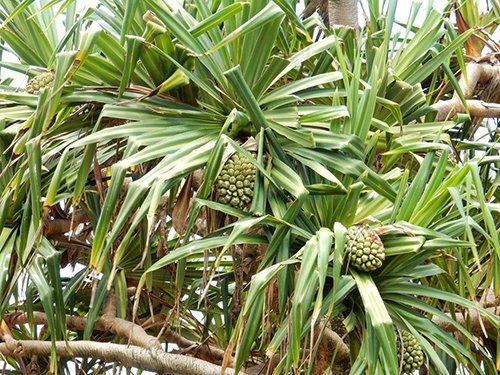
Native Plants
-
‘ĀHEAHEA
‘Āheahea (Chenopodium oahuense) is a shrubby plant that is endemic to Hawai`i. Researchers studying red-footed booby nesting behavior at Kīlauea Point found this seabird had a preference for lining its nest with ‘āheahea leaves. The leaves wilt in the nest and create a nice humid environment for the egg during incubation. The boobies also break off the brittle, woody stems of the older plants to build their nests. This Hawaiian species was propagated from seeds and planted at Kīlauea Point as part of native plant restoration efforts on the refuge. ‘Āheahea is related to a mainland plant called lamb’s quarters which is an edible weed and ‘āheahea was also cooked and eaten by native Hawaiians.
-
ʻAKIA
ʻAkia (Wikstroemia uva-ursi) is a coastal shrub endemic to Hawaiʻi. It has been planted on the refuge as part of the native plant habitat restoration efforts, but is not yet as commonly seen in the public use areas at Kīlauea Point NWR as some of the other natives. The small yellow flowers grow as clusters at the end of the branches and the red or orange berries stand out in contrast to the small grayish green leaves. The tough leaf tips and the berries are used in lei making. This native coastal has become a very popular plant used in landscaping for homes, hotels and commercial sites because the attractive ʻakia is easy to propagate and manage due to its hearty nature.
-
ʻAKOKO
`Akoko (Chamaesyce celasroides) is one of the more commonly seen endemic plants along the pathway out to the lighthouse at Kīlauea Point NWR. This shrubby member of the spurge family is highly variable, and can be found in a wide range of dry habitats, especially along the coast. This plant can grow as either a crawler or a small tree. The leaves, which appear in pairs on opposite sides of the stem, tend to fall off in the summer. The branches are used by the ʻā (Red-footed Booby) as nesting material. Also, peek under the ʻakoko outside the Visitor Center and you are likely to see a number of ʻuaʻu kani (Wedge-tailed Shearwater) burrows.
-
HALA
Hala (Pandanus tectorius) is an indigenous tree that grows in Hawai‘i and throughout the Pacific. This tree was planted out at various places on the refuge and is easily seen along the walkway out to the Point. It is an important plant in Hawaiian culture and the thorny leaves, flowers, roots and fruits were all put to use in different ways, with the leaves valued for “lau hala” weaving. When the young fruit is on the tree it is often mistaken for pineapple by unknowing visitors, thus the nickname “tourist pineapple,” but as the fruit ripens each section, or “key”, turns an orange-yellow color and drops to the ground. Hawaiians used these dried out keys as paintbrushes. The endangered nēnē geese on the refuge can be seen eating the starchy portion of the fallen keys during the fruiting season.
-
‘ILIMA
The low growing, coastal form of ‘ilima (Sida fallax) was planted at Kīlauea Point NWR because it is tolerant of the windy, dry conditions and it can easily be seen along the walkway out to the lighthouse. The yellow-orange flowers are seen year-round. The ʻilima, like so many of the other native Hawaiian plants, was put to good use by the Hawaiians but in modern times it is most known for its use in making the famous ʻilima lei, which can use up to 1,000 of the paper-thin flowers for a single lei.
-
NAUPAKA KAHAKAI
This indigenous coastal shrub, typically just called by its first name “naupaka,” (Scaevola taccada) was planted throughout the refuge because of its ease of propagation and heartiness. It is easily identified by its large, bright green waxy leaves and small white flowers and fruits. It may look familiar to visitors who’ve seen it while at the beach or even at their hotels where it is used commonly used as ornamental landscaping plant. The flower is distinct in that it looks like it is only a half-flower and there are various versions of a Hawaiian tale about the half-flower. The fruits and leaves are edible but are not particularly tasty and were considered famine food by the Hawaiians. Nēnē, on the other hand, indulge in the spongy white berries. Visitors sometimes see nēnē balancing atop the naupaka shrubs plucking off the fruits before they even drop to the ground. For seabirds and nēnē goslings, naupaka also provides valuable protection from the elements and from owls.
-
COCONUT – NIU
Niu (Cocos nucifera), known by most people as coconut, is one of the very important “canoe plants,” so named because it was one of 24 vital plants brought in the canoes by the Polynesians who ventured to Hawaiʻi. These plants sustained life on the journey and upon arrival in their new world. The diversity and life-sustaining uses of niu by humans are surely unmatched by any other single plant. There is a small, old coconut grove visible on the left as visitors approach the public parking lot at Kīlauea Point NWR. This grove was planted in the days when the lighthouse keepers resided on the refuge.
-
PŌHINAHINA
Pōhinahina (Vitex rotundifolia) is another of the low-growing coastal endemic shrubs planted out at Kīlauea Point NWR as part of the native plant restoration efforts. It has small purple flowers and thick, silvery leaves that are typical of so many of the native coastal plants which are well adapted for the salty, dry, windy conditions where they are found. This plant has a strong, minty aroma and can be smelled even without crushing the leaves, just when walking by it. It is said that the leaves rubbed on the skin act as a natural mosquito repellent, but visitors will have to try it from plants found elsewhere because picking of vegetation on the refuge is prohibited in order to protect the native plants.
-
POHUEHUE
Pohuehue (Calystegia sepium) is a native morning glory that is indigenous to Hawaiʻi. It grows as a ground creeping vine with large, tough, waxy green leaves and a large pink flower. Though not so common on the refuge, it can readily be found on many of Kauaʻi’s beaches and is important in reducing beach erosion. Pohuehue, like so many native plants was used by Hawaiian for its medicinal properties.
-
‘ŪLEI
ʻŪlei (Osteomeles anthyllidifolia), sometimes call Hawaiian rose because it is in the rose family, is indigenous to Hawaiʻi and can be found from sea level to 7,500 feet. When it grows in the forest it can reach 10 feet tall and have strong, thick stems that the Hawaiians used for spears and digging tools. At Kīlauea Point, under the wind swept coastal conditions, ʻūlei grows as a low sprawling shrub. Small leaflets make up the shiny green compound leaves and small white flowers grow in clusters at the end of the branches. The small ripe fruits of this plant are eaten by nēnē. Seeds and other parts of the plant were used medicinally by the Hawaiians.











